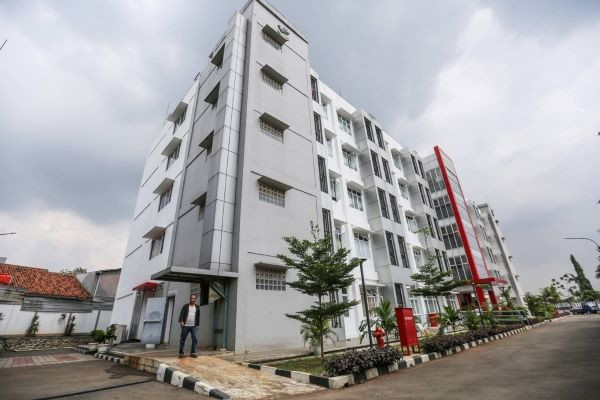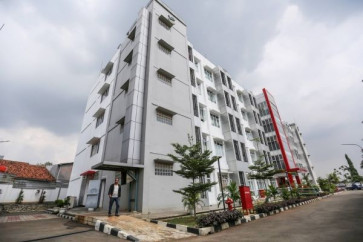Popular Reads
Top Results
Can't find what you're looking for?
View all search resultsPopular Reads
Top Results
Can't find what you're looking for?
View all search resultsInstitutionalizing housing solutions: Building hope for homes
Urban spatial planning must be regulated and developed by shifting its orientation to a transit-based approach, prioritizing the development of settlements around public transport hubs.
Change text size
Gift Premium Articles
to Anyone
 House for lease: A man walks on Jan. 26 past the Sentra Mulya Jaya low-cost apartment in Cipayung, East Jakarta. Built as a joint project managed by the Social Affairs Ministry and the Public Housing Ministry, the apartment is available for low-income families to rent at Rp 100,000 (US$6) per month. (Antara/Asprilla Dwi Adha)
House for lease: A man walks on Jan. 26 past the Sentra Mulya Jaya low-cost apartment in Cipayung, East Jakarta. Built as a joint project managed by the Social Affairs Ministry and the Public Housing Ministry, the apartment is available for low-income families to rent at Rp 100,000 (US$6) per month. (Antara/Asprilla Dwi Adha)
P
resident Prabowo Subianto’s target of constructing three million houses annually is a noble step toward addressing Indonesia’s persistent housing crisis. It is also a deeply ambitious one whose scale dwarfs that of the United States, which built 1.56 million new houses in 2023, and is half that of China, which constructed 6.61 million residential properties in the same year.
The projected costs for meeting this target are substantial, requiring approximately Rp 600 trillion (US$40 billion) a year—a figure that far exceeds the current state budget. The government must take a brave leap to ensure a just, comprehensive and lasting end to the nation’s housing crisis. This ambition needs a fundamental change that focuses on institutional development that can iron out this chronic problem.
At least 9.9 million Indonesian households currently lack housing of their own, a figure that constitutes 13.56 percent of all households in the country, according to Statistics Indonesia (BPS). Not to mention, 34.75 percent of homeowners live in uninhabitable houses. This deficit is chiefly caused by increases in housing prices outstripping increases in wage growth.
In Indonesia, housing prices throughout the provinces are increasing at an average rate of 10-20 percent annually, while wages are only growing by 3-5 percent. This problem is especially pronounced in Jakarta, where housing costs account for 10.3 percent of annual income.
This number is significantly higher than other cities facing much-publicized housing crises, for instance, in London, where housing accounts for 8.5 percent of annual income, and 5.7 percent in New York.
The high costs of transportation from peripheral areas, where most new housing is built, also eat up 30 percent of household expenses, reducing purchasing power and further putting housing out of reach for many. Indonesians also face the highest mortgage rates in Southeast Asia at 9.98 percent, further setting back homeownership aspirations.
A recent survey by Pinhome summarizes the concerns of Indonesia’s sandwich generation as the following: Difficulties in finding the right house, high monthly installments, excessive additional costs, communication problems with banks and realtors and in saving for a down payment.

















